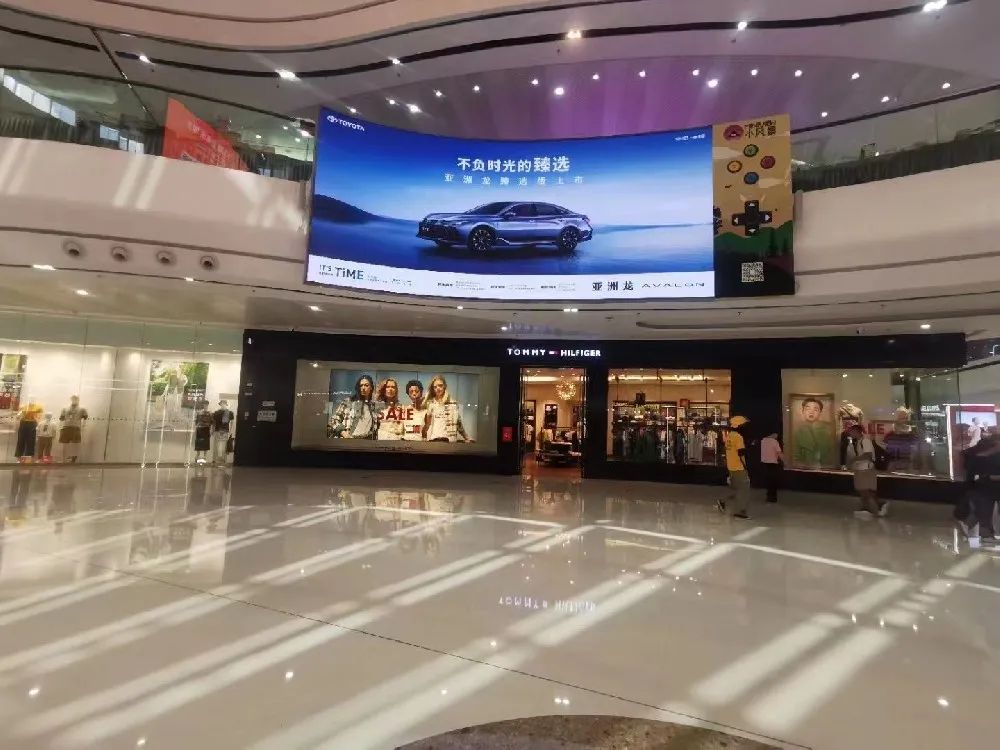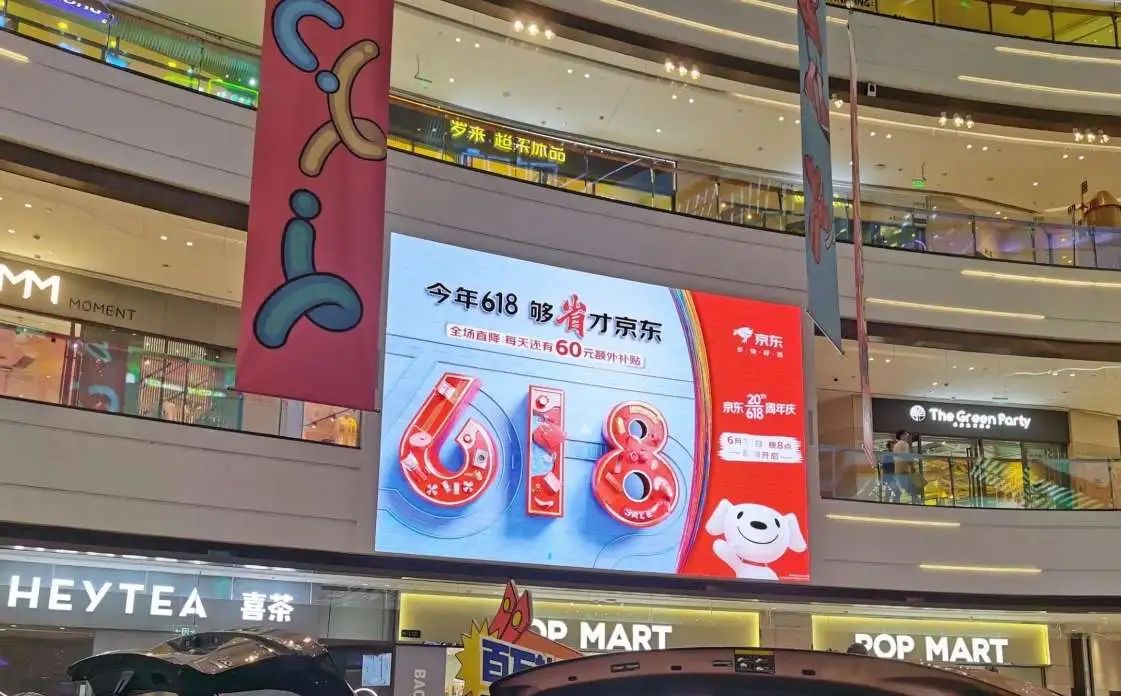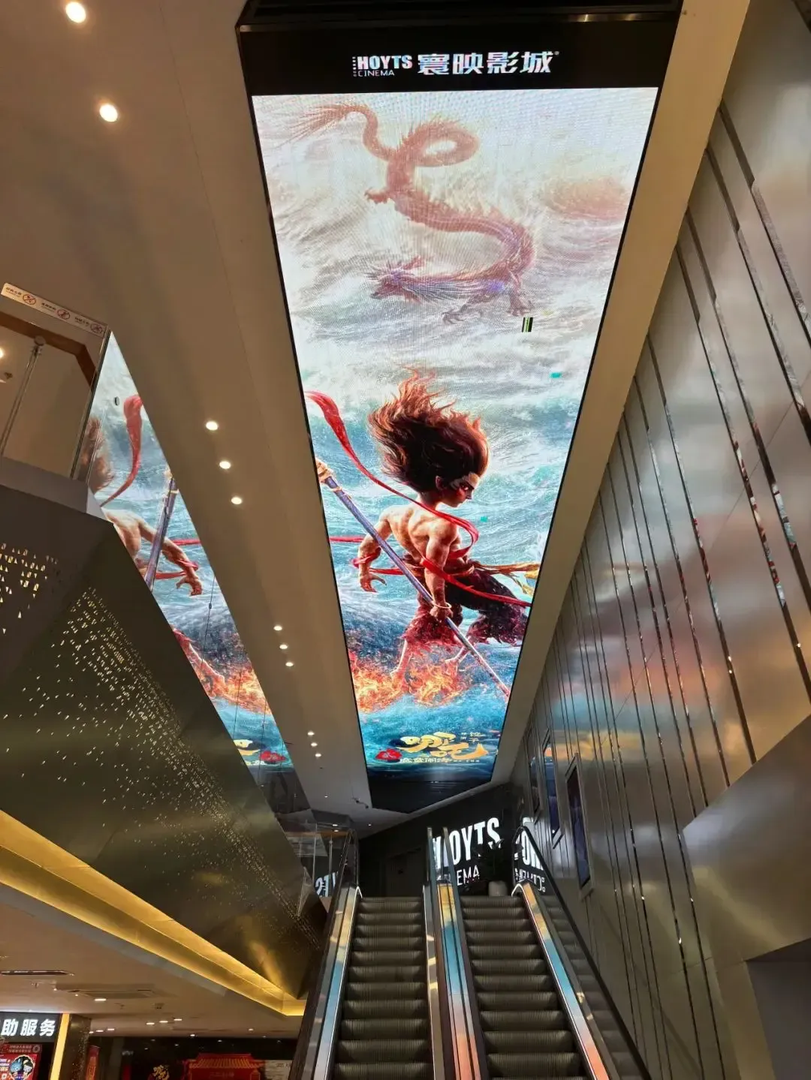When selecting indoor commercial SMD (Surface Mount Device) LED displays—whether for conference room fine-pitch screens, high-end mall display walls, theater stage screens, or museum showcase screens—the "color" of the LED chip package (not the emitted light color) is a key factor determining image quality and user experience. An increasing number of mid-to-high-end indoor scenarios opt for black-coated SMD LED chips, while non-dyed chips (with white brackets and transparent encapsulants) still hold value for specific needs due to their brightness and cost characteristics. This article analyzes the core advantages of black-coated chips, their differences from non-dyed chips, and how to decide based on actual requirements, starting from the pain points of indoor scenarios.

1. First, Clarify: What Changes When "Black-Coating" Indoor SMD LED Chips?
First, dispel a misconception: "Black-coating" SMD LED chips does not alter the brightness or color of the light emitted by the chip. It only optimizes the chip’s package structure (the core structure of indoor SMD LED chips includes metal brackets, transparent encapsulants, and light-emitting chips). The core goal is to solve the "stray light interference" problem in indoor scenarios and adapt to the "small size, close-range viewing" characteristics of SMD chips.
There are two main processes to achieve "black-coating," both designed for indoor scenarios:
Bracket Blackening: A high-temperature-resistant black oxide coating is sprayed on the surface of the SMD chip’s metal bracket (mostly made of copper, which fixes the chip and conducts electricity), blocking the reflection of indoor ambient light (such as conference room lighting and mall ambient lighting) by the bracket.
Encapsulant Dyeing: Black colorants are mixed into the transparent epoxy resin encapsulant of the SMD chip. Only the tiny light-transmitting area directly above the chip is retained, while the rest of the encapsulant turns black to prevent stray light from escaping from the edges of the encapsulant.
For indoor SMD displays, this modification directly targets the core need of "close-range viewing"—after all, in indoor scenarios, the distance between the viewer and the screen is usually 1-5 meters (such as conference attendees, mall shoppers), and any image quality flaws will be amplified.
2. 4 Core Advantages of Choosing Black-Coated Chips for Indoor Commercial SMD Displays
Indoor scenarios have much higher requirements for "image delicacy, visual comfort, and multi-angle consistency" than outdoor scenarios. Black-coated chips precisely address these needs, making them the standard for mid-to-high-end indoor displays:
2.1 Sharply Improved Contrast: Solve "Grayish Blacks" Indoors for Clearer Details
Contrast (the ratio of the brightest to the darkest areas of the screen) is the "lifeline" of indoor SMD displays—whether for Excel data reports displayed in conference rooms, high-definition brand videos played in malls, or dark-stage scenes presented in theaters, pure black is needed to highlight details.
The white brackets and transparent encapsulants of non-dyed SMD chips reflect indoor ambient light into the dark areas of the screen, causing black to appear "gray." For example, a non-dyed SMD screen with 500 nits of brightness in a conference room may see the brightness of black areas rise from 1 cd/㎡ to 30 cd/㎡ under meeting room lighting, dropping the contrast ratio from 5000:1 to just 17:1. This results in blurry grid lines in reports and lost outlines of characters in dark video scenes.
In contrast, black-coated SMD chips can absorb over 95% of indoor stray light. Under the same conditions, the brightness of black areas only rises to 3 cd/㎡, and the contrast ratio remains above 4800:1. Take a high-end mall’s SMD curved screen as an example: when playing luxury advertisements, product textures (such as leather grains and metal luster) against a black background are clearly visible, directly enhancing the brand’s premium feel.
2.2 More Uniform Viewing Angles: No Color Shift for Multi-Person Viewing, Adapting to Diverse Indoor Scenarios
Indoor SMD displays almost always require "multi-angle viewing": conference attendees sitting on both sides, mall shoppers approaching the screen from different directions, and theater audiences distributed in front and back rows. The white brackets of non-dyed SMD chips cause "viewing angle color shift"—when the viewing angle deviates more than 30° from the front, brightness attenuation can reach 40%, and red may turn orange while blue turns cyan (with a color shift value ΔE > 5, clearly noticeable to the human eye).
By absorbing side stray light, black-coated SMD chips maintain a stable horizontal/vertical viewing angle of 160°-170°. Even when viewed at a large angle:
Brightness attenuation rate < 15% (compared to 40% for non-dyed chips);
Color shift value ΔE < 2 (imperceptible to the human eye).
For instance, in a conference room equipped with a black-coated SMD fine-pitch screen, attendees sitting in the corner and the CEO in the main seat see the same data colors and font clarity in the report, avoiding information misunderstandings caused by viewing angle issues.
2.3 No Visual Disturbance: Say Goodbye to "Visible Chip Dots" for Fatigue-Free Long-Term Viewing
Indoor SMD displays are often viewed for extended periods (such as 2-hour meetings in conference rooms, 30-second ad views by mall shoppers, or 1.5-hour theater performances). "Visual comfort" directly affects the experience. The transparent encapsulants of non-dyed SMD chips make individual chips "visible"—even when displaying dark images, dense "small bright dots" can be seen on the screen, creating a "grainy effect" that easily causes eye fatigue during long-term viewing.
The black package of black-coated SMD chips blends perfectly with the dark areas of the screen, significantly reducing "chip visibility." In tests of SMD showcase screens in museums:
Non-dyed SMD screens: 85% of visitors reported "seeing small bright dots on the screen, which distracted them from viewing cultural relic details clearly";
Black-coated SMD screens: 92% of visitors stated "the screen was as transparent as glass, and cultural relics seemed to float on it."
This is also highly beneficial for monitoring rooms (such as corporate security centers) where operators work for 8 hours a day—eye fatigue is significantly reduced after long shifts.
2.4 Longer Lifespan: Better Heat Dissipation, Reducing Maintenance Hassles for Indoor Screens
Indoor commercial SMD displays are mostly "fixed-installation, long-term operation" (such as mall screens running 12 hours a day and conference room screens running 40 hours a week), so lifespan and stability are crucial. The black oxide brackets of black-coated SMD chips have 10% higher thermal conductivity than the white brackets of non-dyed chips—LED chips are sensitive to heat; poor heat dissipation shortens lifespan (non-dyed chips have a lifespan of approximately 50,000 hours) and accelerates brightness attenuation.
Black-coated SMD chips can have a lifespan of over 60,000 hours (equivalent to 7 years of 12-hour daily operation), and after 20,000 hours of use, brightness only decreases by 10% (compared to 15% for non-dyed chips). For enterprises, this means fewer downtime and maintenance instances, avoiding disruptions to important activities such as meetings and exhibitions due to display failures.

3. Two Advantages of Non-Dyed SMD Chips: Brightness and Cost, Suitable for Specific Indoor Needs
Non-dyed SMD chips are not "inferior"; their characteristics make them a reasonable choice for certain indoor scenarios. Their core advantages focus on "brightness" and "cost," which should be viewed objectively:
3.1 Higher Brightness: Adapting to Strong Indoor Light, Meeting Basic "Clear Visibility" Needs
The transparent encapsulants and white brackets of non-dyed SMD chips allow light to be output more efficiently. With the same chip power, their brightness is 10%-20% higher than that of black-coated chips. For example:
Non-dyed SMD chips: Single-chip brightness can reach 800 mcd;
Black-coated SMD chips: Single-chip brightness is approximately 650-700 mcd.
This advantage is suitable for special indoor scenarios with "direct strong light"—such as the entrance area of large exhibition halls (where sunlight shines directly through glass) and workshop display screens in factories (with high brightness from overhead workshop lights). These scenarios have low requirements for "image delicacy" and only need "clear visibility of content"; the high brightness of non-dyed chips ensures that text and simple patterns are not "washed out" by strong light.
3.2 Lower Cost: Aligning with "Budget-Priority" Indoor Needs Without Sacrificing Basic Functions
Non-dyed SMD chips eliminate the "black-coating" or "dyed encapsulant" process steps, resulting in a 10%-15% lower single-chip cost than black-coated chips. For bulk purchases of over 100,000 chips, the total cost can be reduced by 12,000-18,000 yuan.
This cost advantage is suitable for "function-oriented" indoor scenarios: such as temporary office notice screens at construction sites (only displaying text like "Safety Meeting Time" and "Material Storage Location") and temporary exhibition booth sign screens (only showing brand names and booth numbers). These scenarios do not require high contrast or wide viewing angles; choosing non-dyed chips is a reasonable budget plan rather than "pursuing low quality"—after all, cost control for enterprises is part of rational operation.
4. Decision-Making for Indoor Commercial SMD Displays: 3 Steps to Determine "Black-Coated or Non-Dyed"
The core of the decision is to "match indoor scenario needs" rather than blindly following "high-end trends." You can quickly judge through 3 steps:
Step 1: Clarify the "Image Quality Requirements" of the Indoor Scenario
If the scenario requires "high image quality" (conference room data presentation, mall brand videos, theater stages, museum showcases) → Choose black-coated SMD chips to avoid image quality flaws affecting information delivery and brand image;
If the scenario only needs "basic display" (construction site notices, temporary exhibition signs) → Non-dyed SMD chips can be selected to meet the core need of "visibility."
Step 2: Evaluate the "Indoor Viewing Environment and Duration"
If the viewing distance is short (1-3 meters), viewing time is long (over 1 hour), and there are multiple viewing angles → Choose black-coated SMD chips to ensure visual comfort and consistent viewing angles;
If the viewing distance is long (over 5 meters), viewing time is short (within 1 minute), and the environment has direct strong light → Non-dyed SMD chips can be selected to leverage their high-brightness advantage.
Step 3: Calculate "Long-Term Value" and "Budget"
If the display needs to be used for more than 3 years and is a "core visual carrier" (such as the main screen in a corporate conference room or the main display wall in a mall) → Choose black-coated SMD chips; their longer lifespan and lower maintenance costs result in higher long-term overall cost-effectiveness;
If the display has a short usage cycle (within 1 year, such as temporary exhibitions) and the budget is tight → Choose non-dyed SMD chips to reasonably control short-term costs without affecting basic functions.

Conclusion: For Indoor SMD Displays, Black-Coated is the "First Choice for Image Quality," Non-Dyed is a "Rational Supplement"
For indoor commercial SMD displays, black-coated chips are synonymous with "mid-to-high-end image quality." Their high contrast, wide viewing angles, and high comfort perfectly meet the needs of core indoor scenarios such as conference rooms, malls, and theaters; non-dyed chips, with their high brightness and low cost, provide a reasonable option for indoor scenarios requiring "basic functions" and "budget priority."
The key to the final decision is: Clarify whether your indoor scenario requires "image quality experience" or "basic functions," and whether budget planning is a priority. As long as the needs are matched, both black-coated and non-dyed chips are correct choices—after all, the core value of an indoor display is to "deliver information efficiently" rather than "blindly pursue advanced processes."